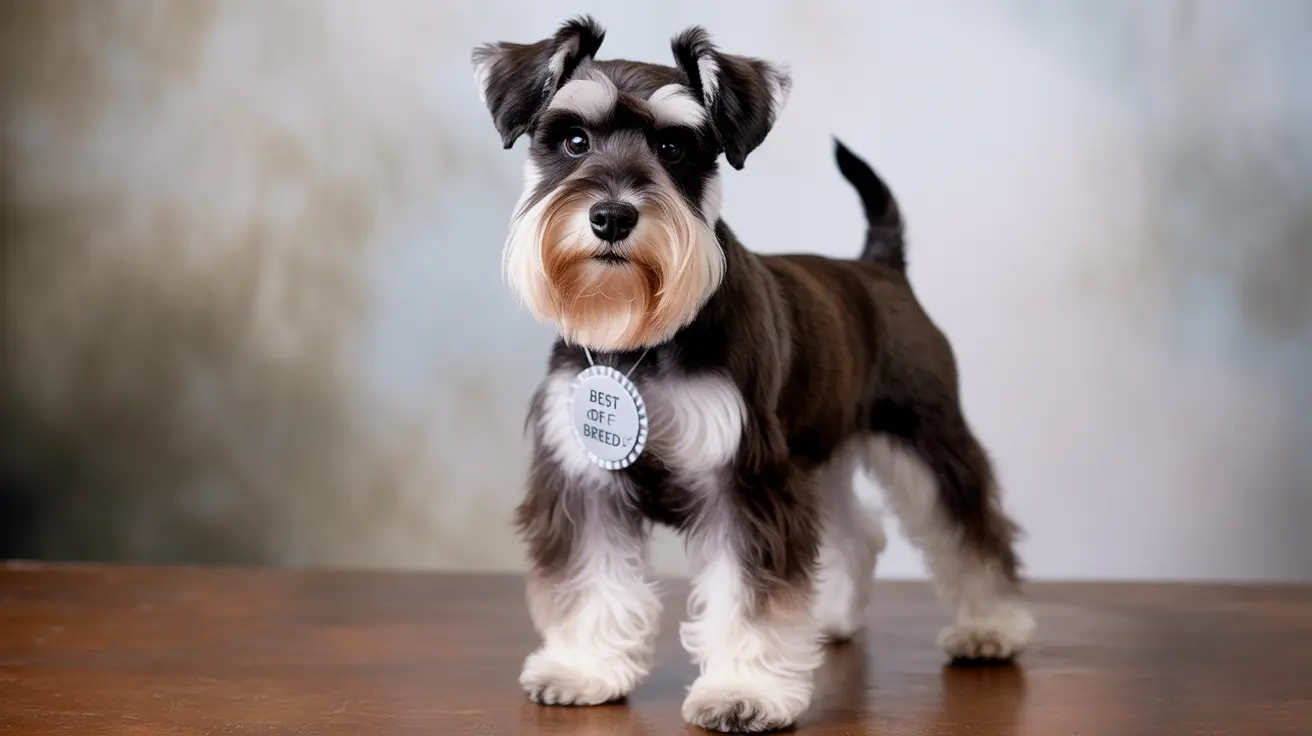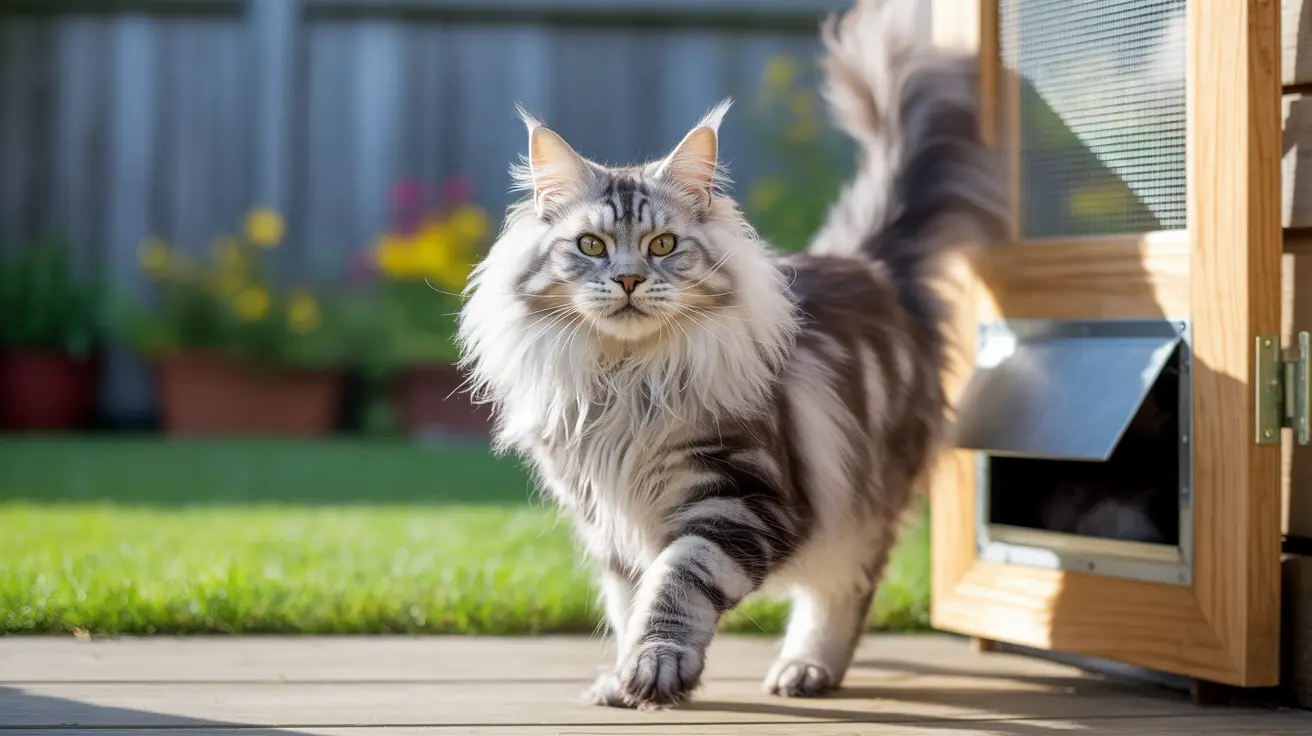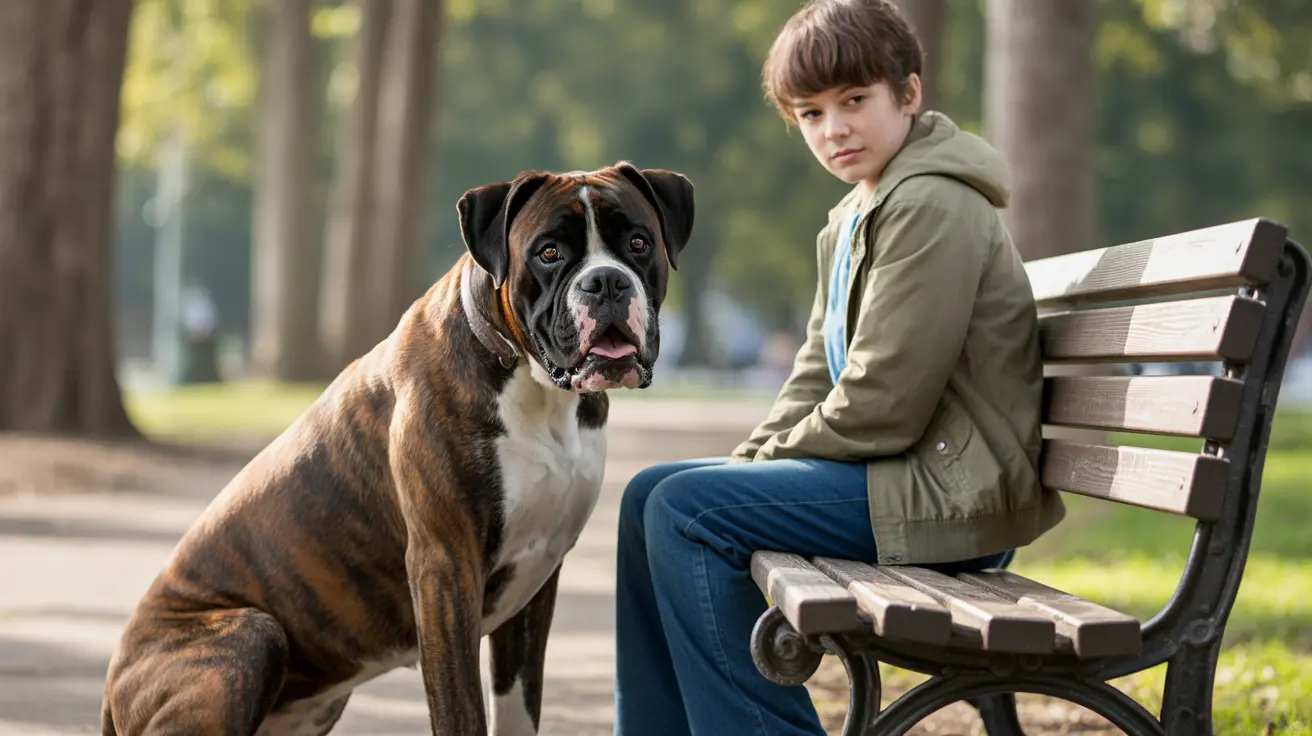The world of Miniature Schnauzer colors extends far beyond the classic salt and pepper coat most people recognize. While the American Kennel Club (AKC) officially recognizes only three standard colors, there's a fascinating array of rare Miniature Schnauzer colors that capture the attention of breed enthusiasts and potential owners alike.
In this comprehensive guide, we'll explore both standard and rare Miniature Schnauzer colors, their genetic origins, and what potential owners should know about these distinctive coat variations.
AKC-Recognized Standard Colors
The AKC breed standard recognizes three official colors for Miniature Schnauzers:
- Salt and pepper (the most common)
- Black and silver
- Solid black
These colors represent the historical foundation of the breed and are the only ones permitted in AKC conformation shows. Salt and pepper coats feature banded hairs that create various shades of gray, while black and silver displays a striking contrast between the black body and lighter points.
Popular Rare Miniature Schnauzer Colors
Beyond the standard colors, several rare and striking variations exist:
White Miniature Schnauzers
White Miniature Schnauzers possess a solid white coat with typically grayish skin underneath. Unlike albinos, they have normal eye pigmentation and are not associated with health issues related to albinism.
Liver and Chocolate Variations
The liver color family includes several distinctive variations:
- Solid liver (chocolate)
- Liver and tan
- Liver pepper
These dogs typically have brown noses, paw pads, and lighter-colored eyes, distinguishing them from black-based colors.
Wheaten and Red Coats
These warm-toned variations include:
- Wheaten (ranging from light tan to cream)
- Red (varying from light orange to deep auburn)
- Black and red combinations
Registration and Show Eligibility
While rare colors can be registered with the AKC for performance events, they face important restrictions:
- Cannot compete in conformation shows
- May participate in other AKC events like agility and obedience
- Must still meet breed standard requirements aside from color
Color Genetics and Inheritance
The diversity of Miniature Schnauzer colors stems from complex genetic interactions:
- Black-based colors (B/B genotype) represent the standard
- Liver colors result from a recessive brown gene (b/b)
- Progressive graying can affect coat appearance over time
- Specific genetic combinations create parti patterns and dilute colors
Coat Color Changes and Aging
Many Miniature Schnauzer colors evolve as the dog ages:
- Red coats may fade over time
- Wheaten puppies often lighten significantly
- Salt and pepper patterns can become more pronounced or lighter
- Some rare colors may not fully develop until maturity
Frequently Asked Questions
What are the rare miniature schnauzer colors that are not recognized by the AKC breed standard?
Non-standard colors include white, liver/chocolate, wheaten, red, blue, parti patterns, and various combinations like liver and tan or black and red. While these colors can be striking, they're not permitted in AKC conformation shows.
Can rare colors like white, liver, or parti pattern miniature schnauzers be registered with the AKC?
Yes, Miniature Schnauzers in rare colors can be registered with the AKC as purebred dogs. However, they can only participate in performance events, not conformation shows.
How do rare miniature schnauzer colors like red or liver affect their eligibility for dog shows?
Rare colors automatically disqualify Miniature Schnauzers from AKC conformation shows. However, these dogs can still compete in other AKC events such as agility, obedience, and rally.
Why do some miniature schnauzers change coat color or fade as they age, especially in rare colors?
Color changes occur due to genetic factors like progressive graying and the natural aging process. Red and wheaten colors are particularly prone to fading, while some patterns become more pronounced with maturity.
What genetic factors cause rare coat colors such as liver, cream, or blue in miniature schnauzers?
Rare colors result from specific genetic combinations: liver colors come from a recessive brown gene (b/b), blue is caused by dilution genes, and cream/wheaten colors involve variations in phaeomelanin expression. These genetic factors affect both coat color and other pigmentation features like nose and eye color.






